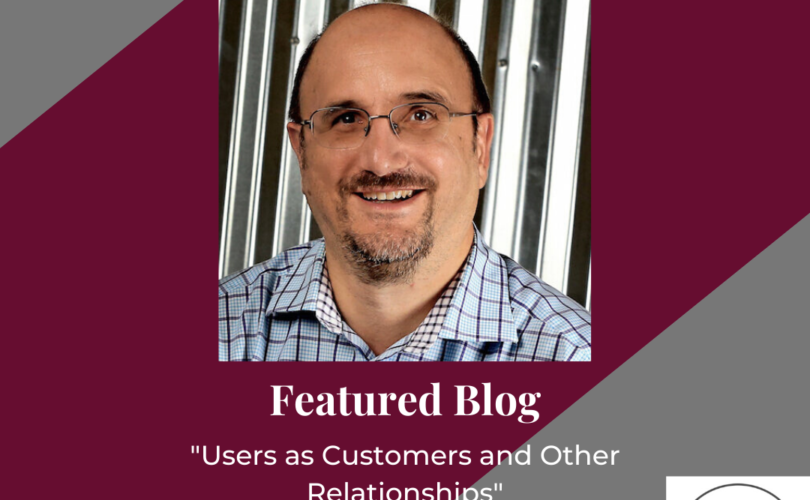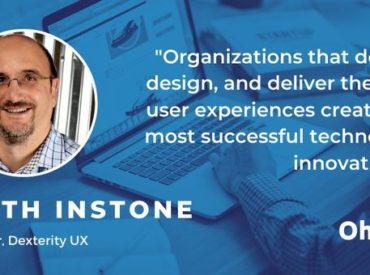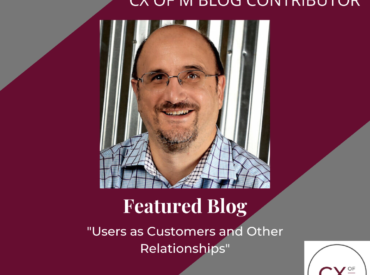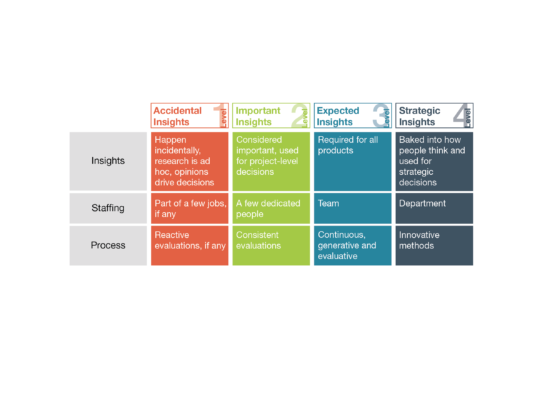This article was originally posted as part of the CX of M blogosphere on April 1, 2020. Local copy added here in August 2023 because the article is no longer online at cxofm.org.
What is the relationship between User Experience (UX) and Customer Experience (CX)? It depends.
You can try to explain the relationship between UX & CX with sets of intersecting circles, but it is not that simple.
It depends on the relationship between the person using the product, service, or system, and the organization they are interacting with.
It depends how narrowly or broadly we define “customer”. The narrow “dictionary” definition of customer is someone who purchases something from a business. Sometimes “customer” is used very broadly, outside of business contexts even when there is no purchasing or marketplace involved, like “the government should provide better customer service for people who need benefits.”
It depends on how broadly or narrowly we define “user”. Sometimes it is narrowly scoped to mean only using websites or software applications. “User” almost always implies the usage of some technology, but how we scope “technology” changes over time. A pencil was “high tech” in its day. Today, “technology” is often used as a term when someone really only means “artificial intelligence” or “machine learning”.
With all of the “it depends”, a framework for how to think about user experiences and customer experiences can help.
The Nielsen Norman Group limits its definition of user experience to interactions with company products & services, so when they compare UX & CX, they conclude “they basically mean the same thing”. That is one way to view UX & CX, but there are others.
Jared Spool talks about many different lenses to see both UX & CX through and argues that when assigning responsibilities within an organization, a team that integrates UX & CX skills will come out on top. When looking at the team management perspective, that makes sense.
Let’s explore some of the relationships between users, customers, businesses, and other organizations in order to tease apart some of the “it depends” factors.
User as Purchaser: “User as Purchaser” is the most common and the typical “customer” relationship, where the person who uses something is also the person who purchases it.
This is so common that it is often overlooked that there are other relationships when you are defining, designing, delivering, and managing experiences.
User without the authority of the Purchaser: There are also cases where a person uses products and services from a company but someone else makes the purchase decision.
“User who did not get to choose” is common with enterprise software and large IT platforms. From the company’s perspective, the CIO or a business unit vice president might be the person that the purchase experience is optimized for, but there are lots of other people in the organization who have very different user experiences. “It scales” might be a key message in the purchase experience, but “it doesn’t work for me” might be what is conveyed by the user experience.
User as “Eyeballs”: On some platforms, the user does not pay to use the system at all. The company makes money some other way, like advertising. For a company like Facebook, advertisers are the customers, the ones paying with money. The users are paying with “attention”.
“Eyeballs” is not the best term. “User as Advertisee”? “User as Target”? “Source of clicks”? “User (of a system) as User (of drugs)” could be depressingly accurate in this context.
Many of our methods of research and design are the same across users as purchasers, non-choosers, and eyeballs. The general steps of a usability test might be the same, but the user goals and tasks are quite different. An organization might manage the experiences of all three types of users on the same platform.
Other Business Relationships
There are other business relationships that have a huge impact on both the user experience and on how the company manages the experience.
User as Employee: The quality of user experiences for “internal” tools used constantly by employees to keep the business running usually does not get as much budget or attention as customer experiences. A lot of HR-driven digital transformation projects are focusing on the employee experience (such as working from home), which is starting to change this trend.
User as Business Partner: The way user experiences across different parts of the supply chain are integrated can be a huge competitive advantage within an industry. All of these partners might be working to serve the same customer.
User as Shareholder: For publicly-traded corporations, there are regulations on how information that affects its stock price is communicated to shareholders and potential investors. Customer experiences and shareholder experiences are usually quite separate: check out the home page of most corporations and you will usually find a link to a “portal” just for shareholders or investors.
User as Client: With professional services, “client” is often a better representation of the relationship than “customer”. Client experiences tend to be more collaborative and less transactional.
Again, our core methods and processes apply to users across these different business relationships, but variations emerge. User research with purchasers often looks a lot like market research, while user research with employees might be woven into HR “engagement” activities.
Some organizations have a “central” UX team that works on projects for customers, employees, and other audiences. Other organizations have different teams: one team that only works on customer experiences, one team only for employee experiences, etc. Ideally, the various teams share best practices, tools, methods, and even move people across teams to find the cases where the audiences have something in common.
Non-Business Relationships
There are also a lot of important relationships outside of a business context, such as interacting in the public sector. The financial model, such as paying taxes for public services, leads to different types of user experiences. A few examples.
User as Learner: “Frictionless” experiences are usually more enjoyable, but learning often involves some form of struggle to get to a point of understanding. Some higher education institutions do try to treat their students as “customers” but if that means learning becomes a series of business decisions and transactions, then the quality of the education can suffer.
User as Citizen: Interacting with government agencies is often not considered a positive user experience, but that is changing. Empathy and creativity are being applied more in citizen-centered design. Activities like voting and getting Medicaid have their own constraints because they don’t happen in a “marketplace”, so blindly applying “best practices” from the business world can cause problems, however.
User as Patient: The experience can be quite different when the health of the individual comes first, and figuring out to pay for it comes later.
User as Friend or Family: There are also very personal relationships, where someone is creating an experience for people they love, such as a family reunion or surprise birthday party. Usually, a goal for these types of experiences is to not feel like business transactions. Hopefully not too much technology is mediating these personal experiences, but when there is an epidemic, a good user experience can maintain social closeness while keeping physically distant.
For people who work in higher education, government, and other parts of the public sector, there are lots of things about customer experience and user experience that they can learn from the private sector. Many of the methods and processes apply in both contexts and some of the tools for designing and platforms for managing experiences should work.
The reverse is also true. “Save the world” design movements are emerging to address social issues like public health, poverty, privacy, equity, and environmental sustainability. When business leaders realize their business objectives line up with various social issues, they may want to adopt methods and mindsets from the public sector.
Priorities around social outcomes (like slowing the spread of a virus) and economic interests (like re-opening businesses) has been a hot topic for debate in the USA recently. Customer experiences are extremely important, but they are not the only lense through which to see the world.
Not the end, just the beginning
Exploring the relationships between users and customers is not the end of the story. If you can take away something from this article and apply it tomorrow, that is great. More likely, using this framework of “User as…” can be the beginning of conversations within your organization.
By looking at the relationships around the experiences, we can make better decisions about how to define, design, deliver, and manage the experiences, which drive the relationships.




